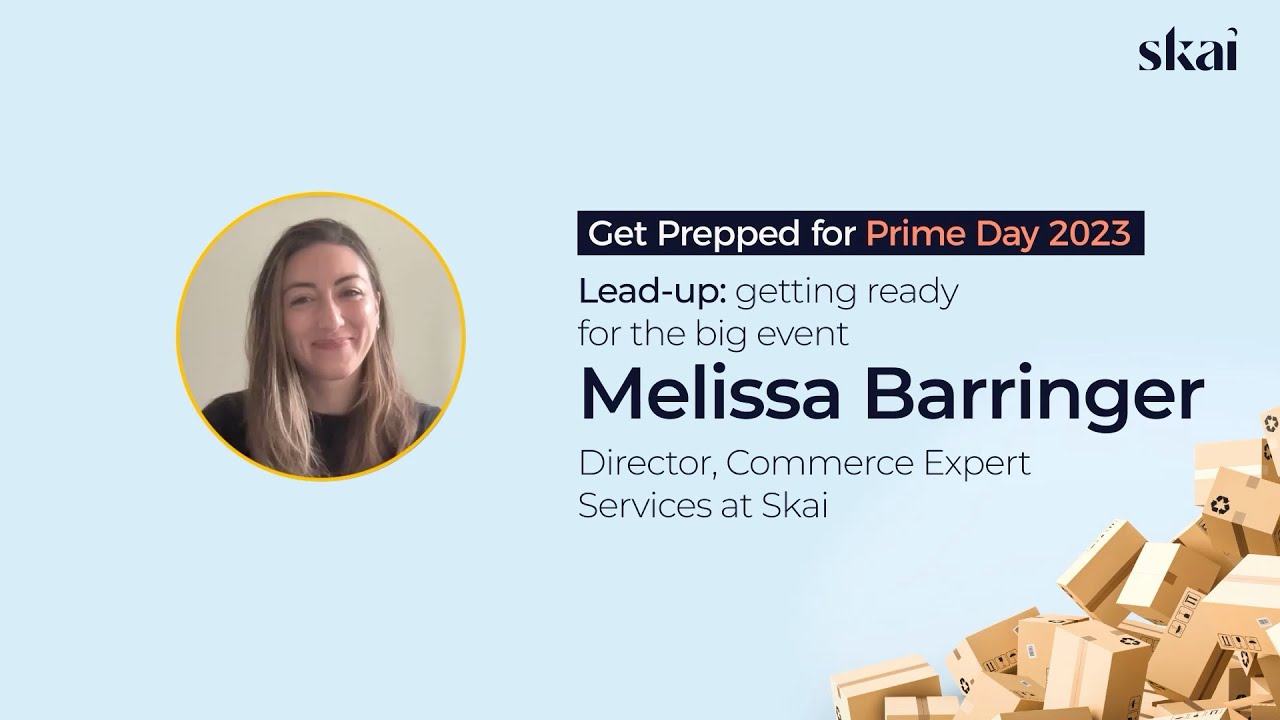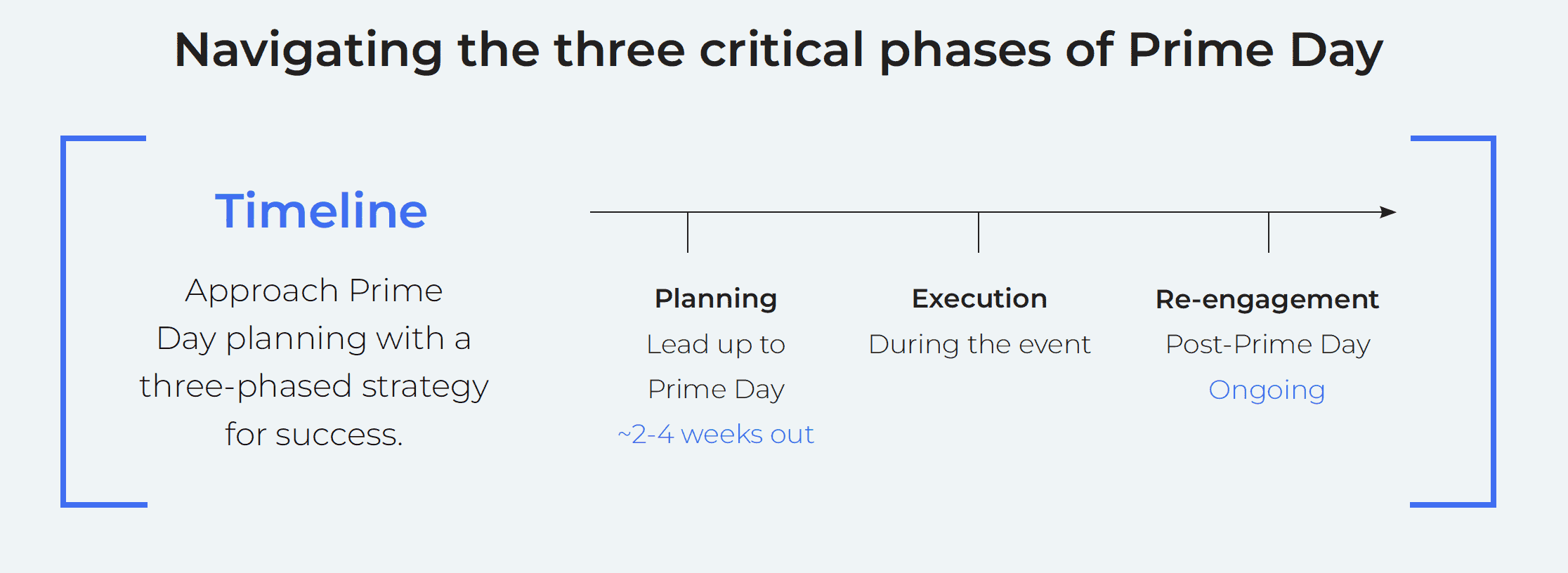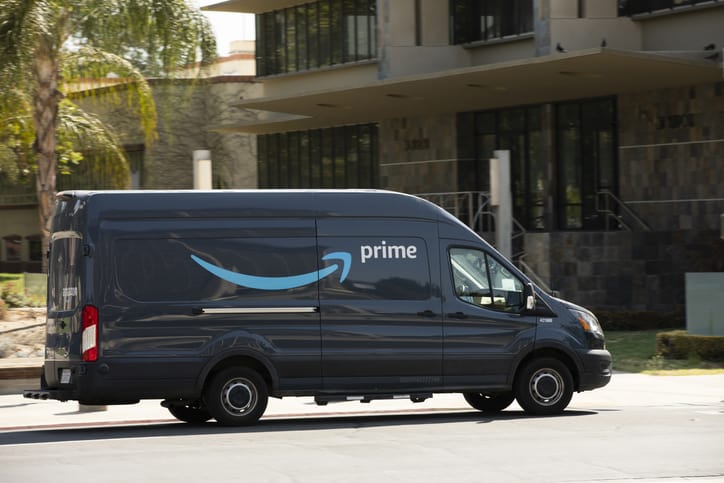
Melissa Barringer
Director of Retail Expert Services @ Skai

Melissa Barringer
Director of Retail Expert Services @ Skai
The biggest shopping event of the summer, Amazon Prime Day, is just around the corner. While the ink has been dry for some time on your Prime Day marketing plans, Skai’s retail media experts have some final advice to help you navigate the season successfully. Today, Skai’s Director of Retail Expert Services, Melissa Barringer, shares some tips for the days and weeks leading up to Prime Day.

By loading the video, you agree to YouTube’s privacy policy.
Learn more
Don’t miss out on these last weeks before Prime Day to up your game. My advice to marketers gearing up for this year revolves around three main aspects: content, advertising strategy, and budget planning.
First and foremost, your content must be in excellent condition. Spending time driving traffic to an incomplete product page hurts your conversion rate so don’t ignore this step. It’s easy to get caught up in the execution mindset for media planning, but it isn’t only about flashy banners or deal tags on your images, it’s about infusing your product detail pages with carefully chosen keywords that align with your advertising strategy and images that reflect your brand persona. Ensuring your images are top-notch and adding engaging elements like videos and A+ Content can cultivate a positive experience with your brand.
Think of it from a consumer perspective if you need to. People can’t interact with your product before purchasing, so providing an experience in your detail page is the next best thing, and, let’s be honest, quality content is a positive indicator that your product is legitimate.

Now for your ads. It’s crucial to review and adjust your advertising approach for an event. Don’t assume that your evergreen strategy alone can effectively capture the tidal wave of traffic that comes through during these days. Consider maintaining a solid base of evergreen campaigns, but also spicing things up a bit. For example, use your full funnel capabilities to meet a shopper at each point of their journey and provide a positive experience with your brand. Include a higher funnel tactic from DSP or Sponsored Display ads for brand reach leading up to Prime Day.
Update your Sponsored Brand campaign taglines and enhance these ads with attractive, lifestyle-focused visuals to help cut through the noise on Amazon and present your brand in the best possible light. Pair this with making sure that your Sponsored Product ads are leveraging Top of Search bid modifiers to support Sponsored Brand placements in taking up as much real estate as possible for high-priority search results.
Pro tip: start this 2 – 4 weeks out from the event days to gain traction and relevance before the event starts.
Next, I strongly encourage marketers to use the weeks leading up to Prime Day for strategic budget planning. Build a lead-in, day-of, and lead-out budget flow to prepare you to ride the wave. You don’t want to be caught off guard by eating up budget too soon or, inversely, risk underspending. You can assess historical data to gauge the expected increase in activity during the event and determine a budget that aligns with your objectives. The choice depends on your goals and the products you’re promoting. Some brands may allocate up to 50% of their monthly budget for Prime Day, while others might stick to around 20%. And don’t forget to adjust your bids accordingly – Amazon has generally suggested a 200% increase, but again, your historical data should guide this decision.
My last tip: be proactive in the weeks leading up to Prime Day. Ensure your content is optimized, tweak your advertising strategies to be more engaging, and strategically plan your budget. This preparation will not only help you sell more in the lead-up when consumers are starting to think about deals—and have shown they are willing to buy early—but also set you up for a successful Prime Day.
The following are a handful of critical areas you should really ensure are ready to roll for the big shopping event.
To boost sales on Prime Day, maintaining ample inventory throughout the lead-up to cater to the anticipated increase in demand is paramount. This holds particularly true for products offered at a discount or as part of promotional activities. Consider communicating with your vendors and Amazon in advance about your expectations and the event forecast, especially if you participate in the SVS program. Occasionally, Amazon might agree to place manual orders to prevent popular products from running out of stock. If Amazon’s stock capacity doesn’t match your event plans, contemplate placing Born To Run orders for a swift inventory uplift.
For those selling in the marketplace, shipping your stock well ahead of time can help avoid potential warehouse capacity issues and stock acceptance delays. Clients of Skai can leverage our Brand Analytics integration to gain accurate insights into their inventory levels and units available leading up to the event.

In recent years, Prime Day has extended to almost a full week. Although a substantial chunk of sales conversions usually happens on Prime Day itself, it’s essential to exploit potential opportunities throughout the broader event timeframe. Prime Day is an excellent opportunity to expose your brand to a vast new customer base. It’s advisable to showcase your top-selling products with enticing deals and high visibility on Prime Day. However, that week also provides an excellent opportunity to spotlight less popular items or strategic product options.
Consider advertising lower-priced products that represent your brand and can act as samples during this key time to customers. Even if these items don’t generate significant profits due to their slim margins, you can utilize the audience they draw for remarketing once the event ends, promoting your higher-profit, top-selling products.
Building a well-rounded campaign that addresses various customer journey stages often outperforms less diverse structures. Balancing your mix of Sponsored Products, Sponsored Brands, Brand Videos, and Display, plus DSP if applicable, will improve your brand’s engagement with customers in multiple ways, enhancing CPC efficiency and brand recall.
Ensure you allow ample time to create and run your campaigns before the event. Ideally, campaigns should launch two to three weeks before the event, with larger budget campaigns initiating three to four weeks earlier. DSP campaigns, which typically require more lead time than Sponsored Ads, should be scheduled to launch at least four weeks before Prime Day.

Regarding keyword match, we recommend allocating 60% of your budget to exact match keywords for enhanced control and optimization quality. Also, consider adding placement modifiers favoring Top of Search to boost discoverability as search patterns change every year.
Before the event, it’s a good time to eliminate underperforming keywords to avoid depleting your budget. Skai’s Search Term Analysis lets you seamlessly add negative search terms from a suggested list to the relevant ad groups via a user-friendly interface, freeing up more time for campaign optimization.
Considering past data, the average daily spending on last year’s Prime Day was 4 times the daily average in June. Therefore, start raising your bids on your priority keywords to enhance both paid and organic visibility. This tactic can provide a competitive advantage for your products during the event when CPCs are projected to increase by 2-4 times, depending on the category and time of day.
Prime Day brings a significant surge of customers and sellers to Amazon, leading to escalated costs that some vendors and sellers may not be prepared for. To avoid this, ensure you have an extra budget set aside for the weeks leading up to and the two days of the event.
Take advantage of the elevated shopping interest during the lead-up by stepping up your activity in the afternoon and evening, when competitor ads might be tapering off. For this strategy, Skai’s dayparting tool allows you to schedule bid increases during specific times of the day for designated campaigns and ad groups. Furthermore, this tool lets you pause campaigns during certain times of the day when consumer activity is lower, focusing instead on early morning, lunchtime, and evening periods.
To gain a deeper understanding of your competition and the gap between your share of search and theirs, use the share of voice data available through Skai’s Brand Insights.

As you prepare for Amazon Prime Day, remember that measurement is a three-part journey. Each phase—before, during, and after Prime Day—has its unique requirements and strategies.
Skai’s platform can help you navigate through each phase effectively, keeping your KPIs and metrics right and eventually making the most out of Amazon Prime Day. Remember, your approach to measurement can be the difference between a good Prime Day performance and a great one.
Skai’s Retail Media solution empowers brands and agencies to plan, execute, and measure campaigns on 100+ retailers in one unified platform with best-in-class automation and optimization capabilities.
We invite you to schedule a brief demo to see all of our cutting-edge innovation for yourself and to get answers to all of the questions you may have.
From the Skai family…have a great 2023 Prime Day!
We use cookies on our website. Some of them are essential, while others help us to improve this website and your experience.
Here you will find an overview of all cookies used. You can give your consent to whole categories or display further information and select certain cookies.